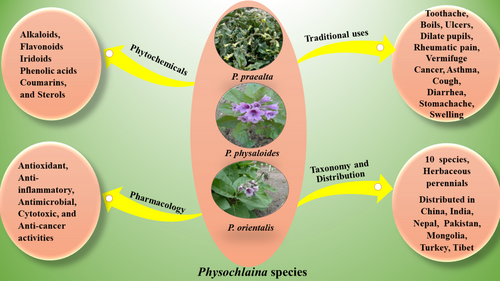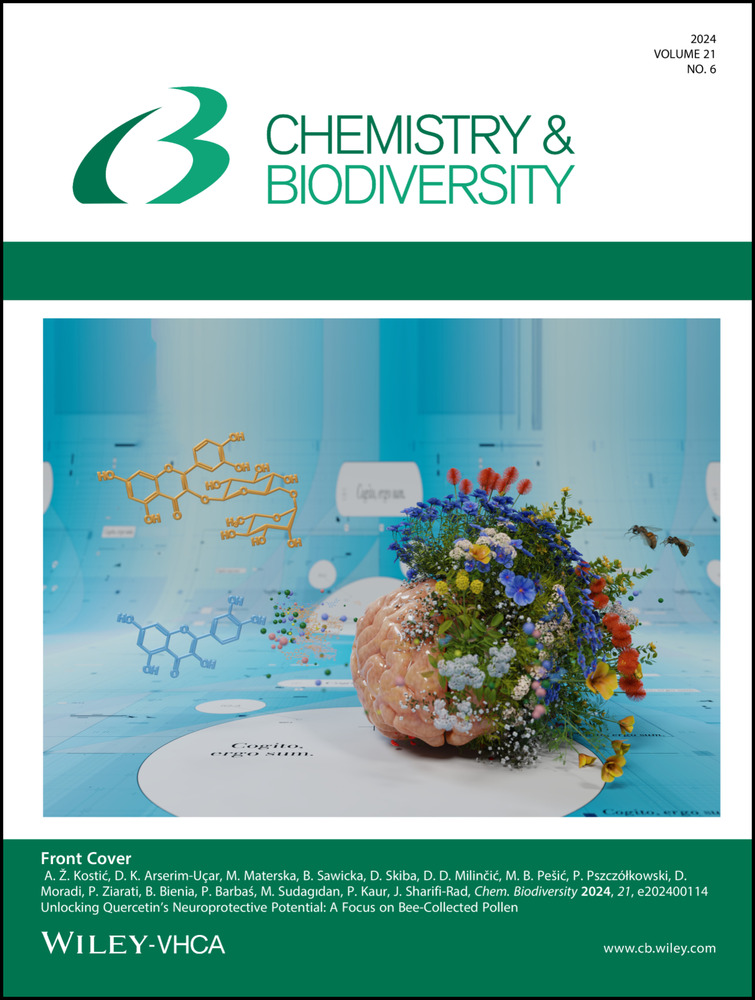A Review on the Traditional Applications, Phytochemistry, and Pharmacology of the Genus Physochlaina G. Don
Abstract
Physochlaina is a genus of flowering plants belonging to the family Solanaceae and consists of 10 species distributed in various Asian countries. The species of the genus have been traditionally used to cure a variety of illnesses due to their highly valuable medicinal properties, including cancer, asthma, cough, weakness, stomachache, diarrhea, swelling, spasms, toothache, boils, ulcers, rheumatic pain, chronic bronchitis, gastric problems, abdominal pain, palpitation, and insomnia. The species have gained significant attention due to their remarkable ethnopharmacological and ethnomedicinal significance. The researchers have isolated so far 71 biologically active secondary metabolites from different Physochlaina species, which include flavonoids, alkaloids, coumarins, phenolic acids, iridoids, and sterols. These compounds exhibit diverse biological activities, such as antibacterial, anti-oxidant, anti-inflammatory, cytotoxic, and anticancer properties. The present review has been compiled with the intention of providing a comprehensive overview of the botany, distribution, traditional uses, phytochemical profile, and biological activities of the genus Physochlaina for future exploration of plant-based drugs and therapeutic approaches. The present review contributes to understanding the significant pharmacological potential of Physochlaina species and unraveling their chemical composition, highlighting their relevance in developing therapeutic agents. Till date, numerous pharmacological properties and isolated phytochemicals of Physochlaina species that support the species traditional and ethnobotanical history have been documented in a number of scientific publications. However, greater emphasis should be paid to in vivo investigations on various extracts and their phytoconstituents as well as mechanistic analysis to help drug developers better understand how to use Physochlaina species as significant therapeutic resources for herbal formulations using various techniques.
Graphical Abstract
Conflict of interests
The authors declare that there is no conflict of interest.





